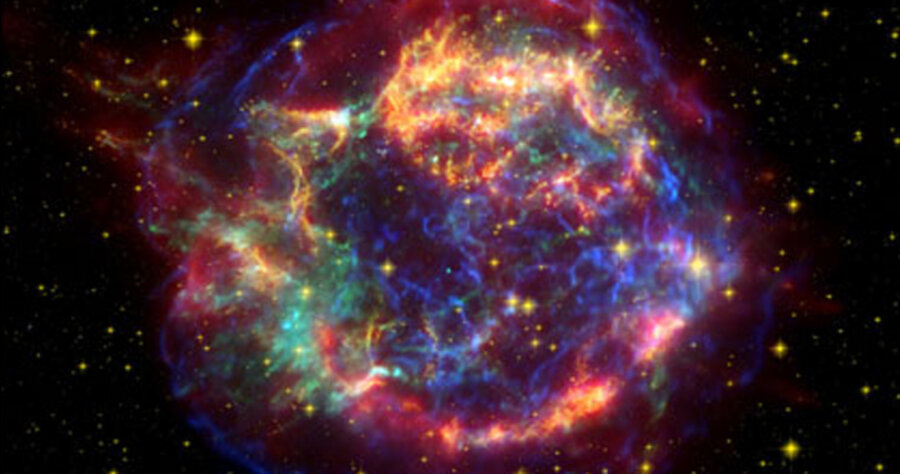Astronomers witness the echoes of centuries-old supernovae
Loading...
Tycho Brahe’s observations of a supernova that flashed into view in 1572 are standard astronomical lore. Now astronomers have seen for themselves the light that Tycho saw 436 years ago. Some of the light from that exploding star 10,000 light-years away has been bouncing around our galaxy, scattering off dust clouds, and only now has it reached Earth. So too has light from another well known supernova – Cassiopeia A (Cas A).
As announcements from two research teams pointed out last month, the ability of modern telescopes to observe these faint and fleeting light echoes is a kind of time machine. It reveals what happened in an old supernova explosion when the opportunity for direct observation seems long gone.
The gaseous remnant of Cas A 11,000 light-years away is one of the most thoroughly studied objects in our galaxy. Astronomers would love to know what happened when its star blew up. It would let them trace the evolutionary journey from the unknown circumstances of the explosion to the well-known circumstances of the remnant they know today. Now they are getting the kind of data they need to find out.
Such knowledge is basic for understanding the evolution of planetary systems and even of organic life itself. Many key elements we take for granted on Earth were formed as shock waves from supernova explosions plough through the interstellar medium. They include such elements as bone-building calcium or tool-forming iron.
Light echoes resolve an annoying disconnect in this element-forming story. Astronomers can observe star explosions all over the universe, but have to wait centuries to see how their remnants will evolve. They can also study nearby supernova remnants in detail, but can’t observe how they began. As Armin Rest at the Harvard-Smithsonian Center for Astrophysics explains: “[Astronomers] can’t study both the supernova explosion and the remnant for the same event. With light echoes, though, you can do both for the same event.”
Dr. Rest and colleagues looked at the locations of the seven brightest supernovae recorded during the past 2,000 years. They picked up light echoes from both Tycho’s 1572 supernova and Cas A, estimated to have exploded in 1671. Studying their spectra will reveal what type of star exploded and other details.
Meanwhile, Oliver Krause at Germany’s Max Planck Institute for Astronomy and an international team published their analysis of the Cas A light echoes in the May 30 issue of Science. Dr. Krause said he expects that the team’s findings will “help put all previous observations and theories of Cassiopeia A into proper context.”
That will be a significant scientific achievement. Yet it’s Tycho’s supernova that has historical cachet. His merely seeing a new light in the sky punctured long-standing Christian church dogma that nothing could change in the celestial realm. “I think it’s cool that I can look at the sky and still see the same light that Tycho did,” says Rest’s team member and Texas A&M astronomer Nicholas Suntzeff.





